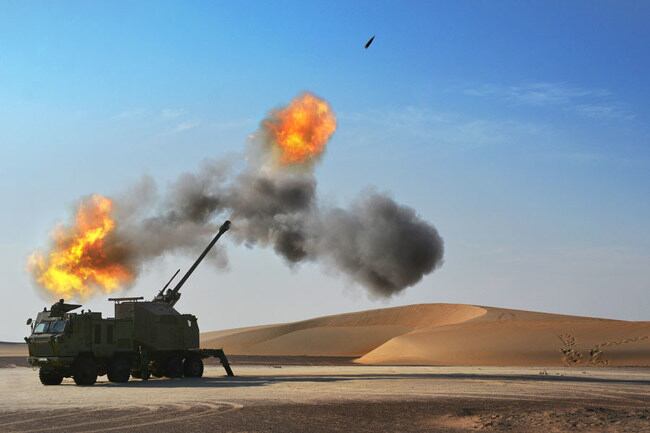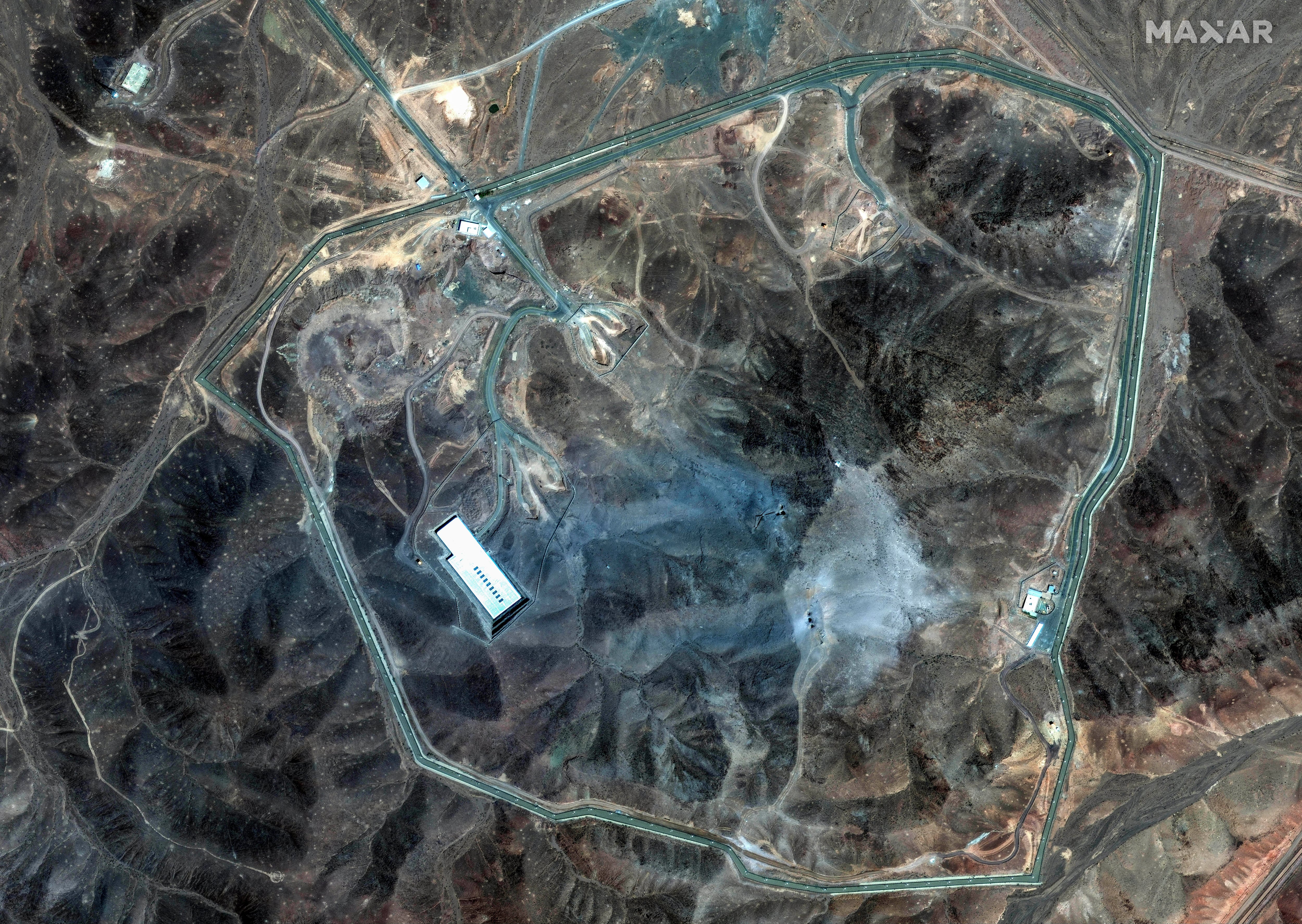UPDATE — This story has been updated to include Nexter’s participation in the shoot-off.
WASHINGTON — Participants are emerging for the U.S. Army’s mobile 155mm howitzer shoot-off coming up in early 2021 at Yuma Proving Ground, Arizona.
Elbit Systems of America announced Dec. 17 it had been chosen to bring its Autonomous Truck Mounted Ordnance System (ATMOS) Iron Sabre to the evaluation.
And BAE Systems, Nexter and Serbia’s Yugoimport announced they too had been chosen to bring offerings to the shoot-off.
AM General has also publicly expressed their interest in participating in the shoot-off. Other possible offerings could come from South Korean defense company Hanwha and Japan’s Mitsubishi. Other contenders could be the South African 6x6 Rhino or the Slovakian 8x8 DANA.
The Army is looking for a production-ready system that offers an improvement in range, rate-of-fire and mobility over the artillery systems used within Stryker Brigade Combat Teams now. The service released an announcement in July seeking a more mobile, lethal and survivable replacement for its current towed howitzers and described its plan for a three-month-long shoot-off.
Participants must provide 18 evaluation systems for the event, according to the solicitation. The Army would like the selected company to begin delivering systems in the first quarter of fiscal 2023.
Elbit said in its statement that it was confident its system would perform well in the shoot-off because it’s “ready now.” ATMOS Iron Sabre is “a proven fielded system from a family of howitzers that have supported international customers for more than 30 years.”
ATMOS Iron Sabre is a 155mm/52 caliber semi-automatic system capable of firing six to seven rounds a minute with a crew of four, Dave Richards, senior director of precision weapon systems ground combat & precision targeting solutions at Elbit Systems of America, said during a media availability.
The Elbit system is C-17-transportable and can traverse the battlefield at roughly 50 miles per hour and has a “shoot-and-scoot” capability of roughly 30 seconds, which means it takes a half minute to stop, set up and shoot and the same amount of time to stop shooting, pack up and move out of the way. This capability is critical against high-end adversaries like Russia, which have displayed its ability — particularly in the fight with Ukraine — to quickly detect firing locations and respond.
While ATMOS will arrive at the evaluation with its own fire control system used by Israeli forces, the system can be customizable and could integrate different fire control systems as customers see fit, Richards said. The Army will be looking at fire control system capability as part of the demonstration.
Should Elbit be chosen to manufacture and field its system for the U.S. Army, the company is looking at a plan to facilitate production capability in the U.S., according to Richards. As it stands today, ATMOS systems are mostly produced in Israel and final production would take place in the U.S. at least initially.
“COVID has demonstrated the importance of domestic supply chain security. We take that very seriously,” Richards said. “We are in a multi-year process of facilitating production of vehicle systems in the United States and obviously this will be contingent upon delivery timing, but we do have a broad plan to actually produce most systems and subsystems within the United States.”
BAE Systems announced earlier this year that it had offered up its Archer howitzer to the Army for the shoot-off.
The company confirmed to Defense News it was selected to participate in the shoot-off.
“We are confident that the Archer, highly mature and in service with the Swedish Army, will demonstrate its superiority at providing rapid, highly effective, and sustained fire support for troops in combat,” the company said in a statement. “The Archer’s automated design, armored cabin, fast shoot and scoot times, and extended range enhance its survivability on the battlefield. Soldiers can operate the vehicle entirely from inside the cabin, under armor, while striking enemy targets at long ranges.”
Archer is typically operated by a crew of three to four soldiers but can be operated by only one, according to BAE. Archer can also fire within 30 seconds after receiving an order to shoot and can scoot within 30 seconds as well. The magazine carries 21 rounds and can unload all of them in less than three minutes, BAE said. Archer can shoot the BONUS anti-armor munition up to 35 kilometers, conventional munitions up to 40 kilometers, and currently fielded precision-guided munitions like Excalibur in excess of 50 km, according to the company.
Global Military Products also announced Dec. 17 that the U.S. Army had chosen its Serbian partner Yugoimport’s NORA B-52 155mm wheeled howitzer for the shoot-off as well.

NORA has a fully automatic autoloader and a “move-shoot-move while under armor” capability, according to the statement. NORA has undergone modernization and upgrades over the past several years “that are sure to get the attention of the U.S. Army” the statement adds.
Nexter told Defense News it had been selected to bring its 155mm self-propelled howitzer CAESAR — which has been in service since 2008 and battle-tested in Afghanistan, Lebanon, Mali and Iraq — as a strong candidate for the shoot-off. It will be bringing the 6x6 version used by the French Army.
The company has sold more than 300 CAESAR systems to the French, South-East Asian and Middle Eastern armies.
CAESAR can fire 6 shots in less than 1min 40 seconds, according to Nexter, and the system’s 8x8 version can carry 30 rounds. It’s 6x6 variant can carry 18. The gun has an adapted automatic loading system.
AM General has advertised both its Brutus 155mm and Hawkeye 105mm mobile howitzers and is expected to participate in the shoot-off. The company said it would not comment on whether it was selected at this time.
Correction: An earlier version of this story misidentified Elbit’s senior director of precision weapon systems ground combat & precision targeting solutions who was incorrectly identified in a company email.
Jen Judson is an award-winning journalist covering land warfare for Defense News. She has also worked for Politico and Inside Defense. She holds a Master of Science degree in journalism from Boston University and a Bachelor of Arts degree from Kenyon College.




